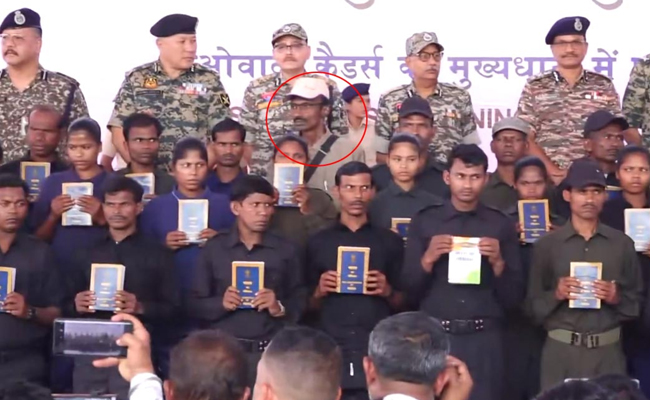
India News

After four decades of armed struggle, the Maoists’ “Asha” has finally laid down arms and stepped into the mainstream of public life. With the changing political and social climate in the country, the realization has dawned within the Maoist ranks that there is no longer a place for armed revolution. The long-held “hope” of seizing power through violence is slowly fading away — and the surrender of top Maoist leader Rupesh, also known as Ashanna, stands as proof of that transformation.
Just two days ago, the surrender of top Maoist leader Mallojula Venugopal and 60 others dealt a major blow to the movement. Now, in the presence of Chhattisgarh Chief Minister Vishnu Deo Sai, Ashanna, along with 208 Maoists, has given up arms and joined the social mainstream — a massive setback for the Maoist organization. Ashanna’s real name is Takkallapalli Vasudeva Rao.
A native of Narsingapur village in Venkatapur Mandal, Mulugu district, Ashanna was drawn to the Naxalbari movement four decades ago. While pursuing his degree at Kakatiya University, he actively participated in the Radical Students Union and later became a key figure in the Naxalite movement. He was 22 years old at the time. According to intelligence sources, he is now over 60 years old.
Throughout his involvement in the Maoist movement, Ashanna played a crucial role in several major incidents. Police officials claim he was involved in the assassinations of IPS officer Umesh Chandra and former Home Minister Madhav Reddy. Intelligence reports also linked him to the 2003 Alipiri landmine attack targeting then–Chief Minister Chandrababu Naidu.
In a recently released video, Ashanna discussed several key points. He emphasized the importance of self-preservation and stated that, under current circumstances, joining the mainstream and participating in public movements is the right path forward. He urged other Maoists who wish to surrender to reach out and follow the same path.
Among those who surrendered recently were 110 women and 98 men, bringing a total of 153 weapons with them. These included 19 AK-47 rifles, 17 SLR rifles, 23 INSAS rifles, 36 .303 rifles, 41 bore shotguns, and several other firearms. This mass surrender marks a significant moment in India’s long battle with left-wing extremism.
Advertisment